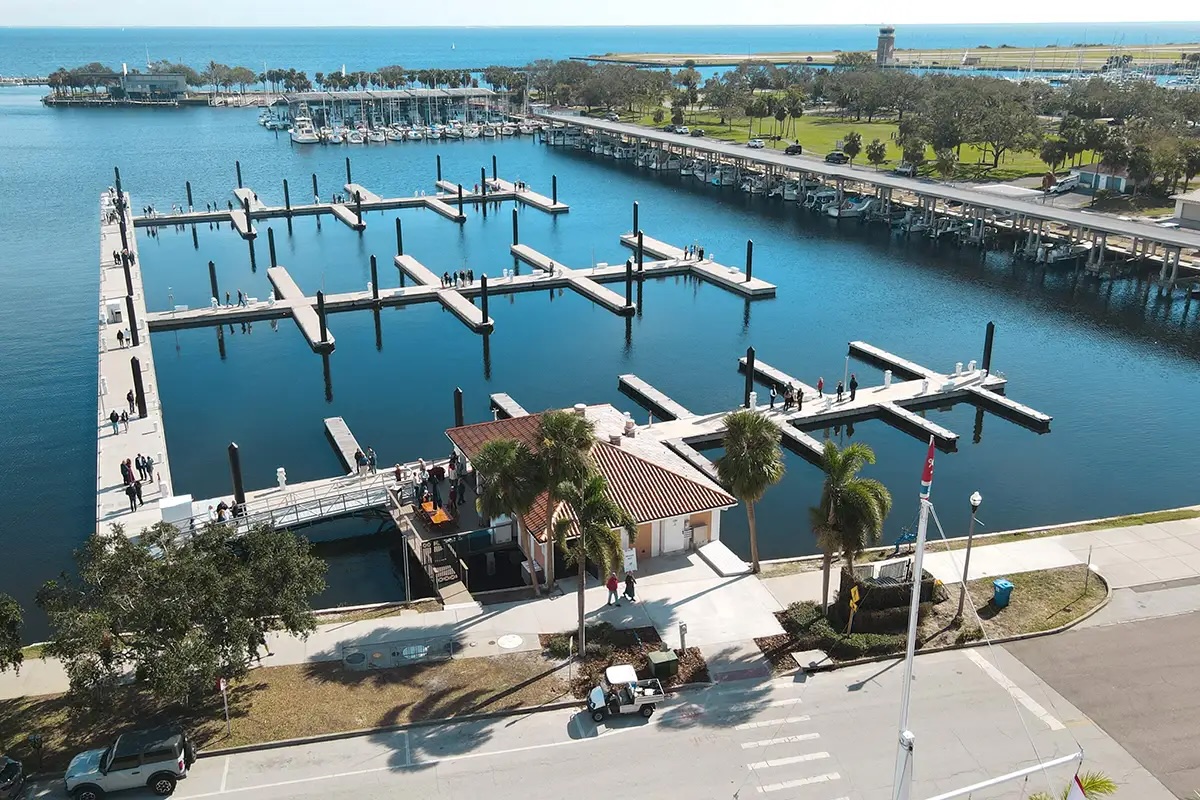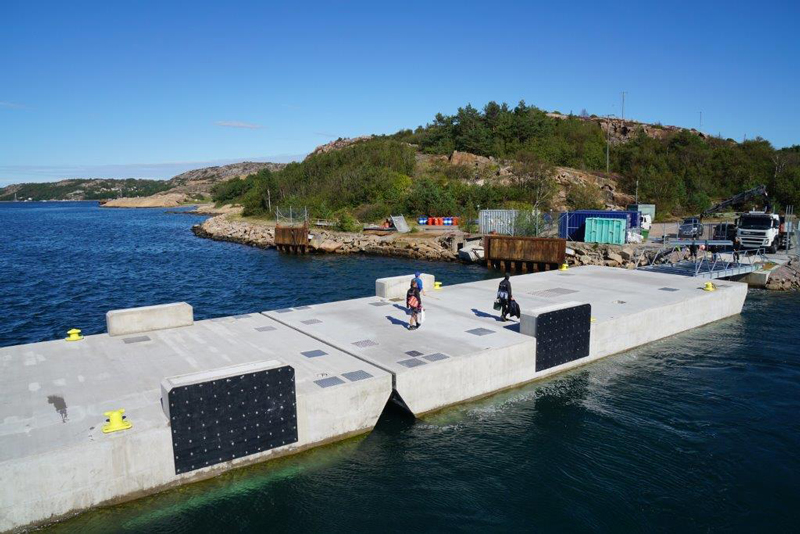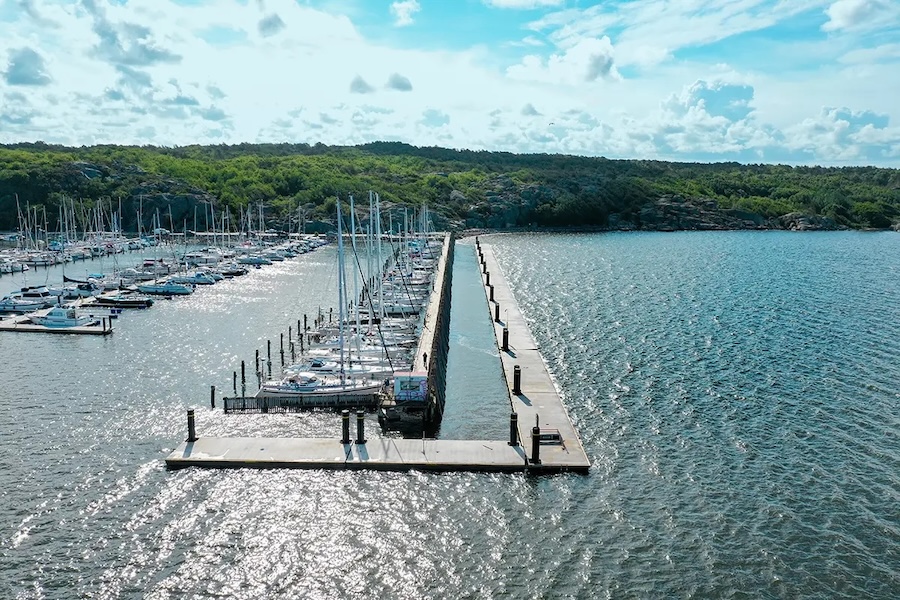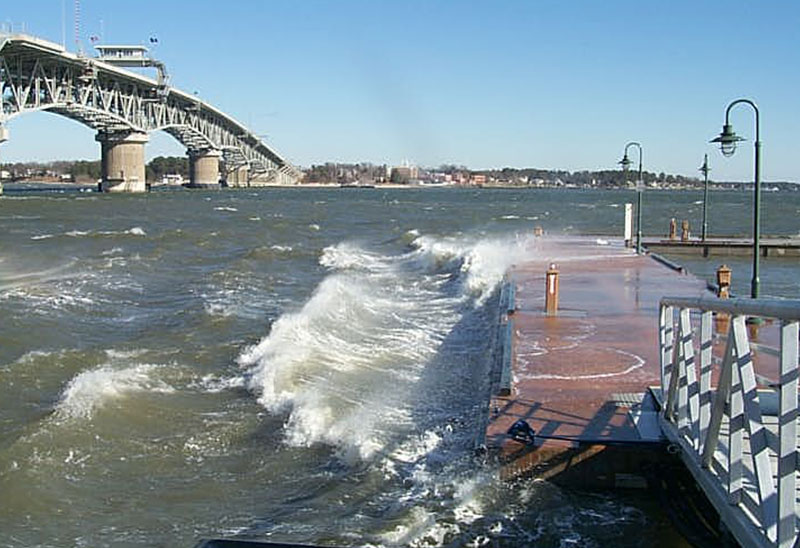2025 Buyer’s Guide: Dock Systems

This buyer’s guide explores the critical role of dock systems in coastal projects, providing marine contractors with a comprehensive resource for selecting and installing these essential structures. It covers the types, key considerations, installation methods, and cost factors of dock systems—ensuring contractors can make informed decisions for projects like marinas, piers, and commercial docks.

What are Dock Systems?
Dock systems are essential infrastructure for marine contractors, enabling safe and efficient access to water in coastal environments while supporting a range of activities.
Definition and Functionality
Dock systems are structures that extend over water to provide mooring and access for boats—typically supported by pilings, anchors, or floating bases—depending on the design and environmental conditions. They serve as platforms for activities like docking vessels, loading cargo, or recreational boating—making them indispensable for waterfront projects in coastal regions.
Core Components
The essential components of dock systems include decking—made from materials like wood, composite, or aluminum for durability and traction—framing to provide structural support—and foundational supports such as steel or timber pilings that anchor the dock to the seabed. These elements work together to ensure stability—with pilings or anchors resisting wave action and decking providing a safe, functional surface for users.
Benefits for Coastal Projects
Dock systems enhance waterfront functionality by enabling safe boat access, protect against erosion by stabilizing shorelines, and support economic activities like tourism, fishing, and shipping in coastal communities. They also provide a foundation for additional infrastructure, such as walkways or breakwaters, making them a versatile solution for marine contractors working on coastal developments.
Types of Dock Systems
Understanding the different types of dock systems helps marine contractors select the best solution for their coastal projects, balancing functionality with environmental demands.
Fixed Docks
Fixed docks are permanent structures secured to the seabed with pilings, typically made of steel or timber, making them ideal for areas with consistent water levels, such as small lakes or protected bays, where stability is paramount. They provide a solid platform for activities like fishing or mooring small boats, but their rigidity makes them less suitable for regions with significant tidal fluctuations.
Floating Docks
Floating docks are buoyant systems that rise and fall with water level changes, constructed with materials like aluminum or composite decking on floating bases—making them perfect for tidal zones or deep-water applications like marinas. Their adaptability ensures consistent access regardless of water conditions, offering a practical solution for dynamic coastal environments.
Piling Docks
Piling docks use driven pilings for foundational support, often steel or timber, but allow the deck to either float on the water’s surface or remain fixed—providing a hybrid solution that offers versatility in coastal settings with varying water levels. This design combines the stability of fixed docks with the adaptability of floating systems, making them suitable for diverse applications like private piers or commercial docks.

Key Considerations When Choosing a Dock System
Selecting the right dock system for coastal projects requires marine contractors to evaluate several critical factors to ensure durability, safety, and environmental responsibility.
Material Selection
When choosing materials, aluminum offers lightweight corrosion resistance—making it ideal for saltwater exposure. Timber provides a cost-effective option but requires more maintenance. And composite materials deliver low-maintenance durability with resistance to rot and UV damage. Contractors should prioritize materials that balance longevity and cost, ensuring the dock withstands harsh marine conditions over time.
Environmental Resilience
Docks must withstand environmental challenges like waves, storms, and UV exposure—so designs should account for sufficient load capacity to handle boat traffic and wind resistance to endure coastal gales. Selecting systems with reinforced framing and secure anchoring, such as steel pilings, ensures the dock remains stable and functional even during extreme weather events.
Compliance and Sustainability
Meeting coastal regulations, such as wetland protection laws, is essential to avoid fines and delays—requiring contractors to secure permits and conduct environmental assessments before installation. Choosing eco-friendly materials, like sustainably sourced timber or recyclable composites, helps minimize environmental impact—protecting marine ecosystems while aligning with growing sustainability standards in coastal construction.

Installation of Dock Systems
Proper installation of dock systems is crucial for marine contractors to ensure a safe and durable structure that can withstand the challenges of coastal environments.
Pre-Installation Assessment
Before installation—contractors must evaluate water depth, current strength, and seabed conditions. Tools can be utilized like sonar for depth mapping and geotechnical surveys to assess soil stability, determining the best anchoring method—whether pilings for fixed docks or mooring blocks for floating systems. This assessment ensures the dock system is designed to handle site-specific conditions, preventing issues like shifting or instability during use.
Installation Methods
Installation techniques vary by dock type: fixed docks require driving timber or steel pilings into the seabed with a pile driver, often using a small barge for access in deeper waters—while floating docks are assembled on-site and secured with anchor chains to mooring blocks. Contractors may also use cranes to position heavy components, ensuring precise placement and alignment in dynamic coastal settings.
Ensuring Long-Term Stability
To ensure long-term stability—contractors should use corrosion-resistant fasteners, such as galvanized or stainless steel bolts, to prevent rust in saltwater—and drive pilings to a proper depth, typically 15-30 feet, to secure the dock against tidal shifts and storms. Regular checks during installation, like verifying pile alignment with laser tools, help maintain structural integrity—ensuring the dock remains safe and functional for years.
Cost Considerations
Understanding the financial aspects of dock systems helps marine contractors plan effectively, ensuring projects stay within budget while maintaining quality and durability.
Upfront Costs
Initial costs for dock systems vary widely. A small fixed dock typically ranges from $3,000 to $10,000, while a larger floating system can cost between $15,000 and $30,000—depending on factors like size, materials (e.g., timber vs. aluminum), and additional features like railings or lighting. These expenses cover the dock structure itself, foundational supports like pilings, and any necessary hardware—making material selection a key driver of the overall price.
Installation Expenses
Installation expenses, including labor and equipment, often range from $5,000 to $15,000—with costs like pile driving (for fixed docks) and barge rental for water access varying based on project complexity and location. For example, driving steel pilings in a remote coastal area with strong currents may require specialized equipment and skilled labor—increasing the total installation cost.
Maintenance and Lifecycle Costs
Ongoing maintenance costs—such as $500 to $2,000 annually for inspections, cleaning, and minor repairs (like replacing worn decking or tightening fasteners)—ensure docks remain functional over their 20-30 year lifespan. Contractors should also budget for periodic upgrades, such as applying anti-corrosion treatments to pilings, to prevent major repairs and extend the dock’s service life in harsh marine environments.
